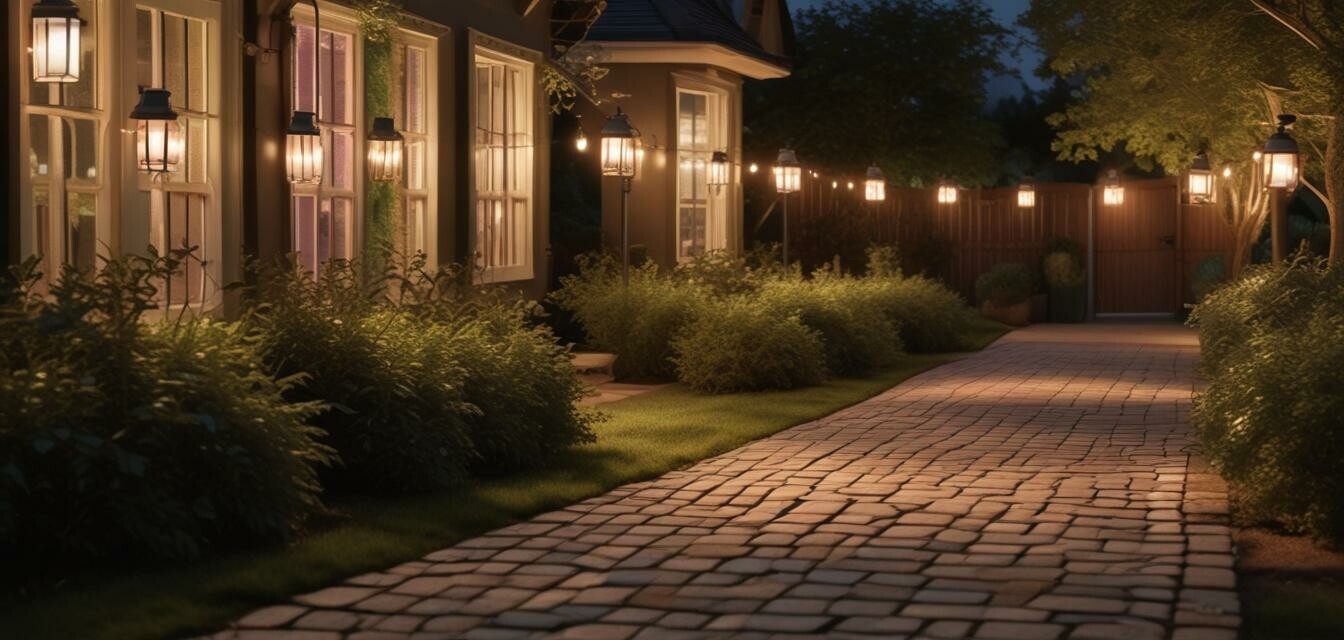
How to Optimize Outdoor Lighting
Key Takeaways
- Understand the types of outdoor lighting fixtures available.
- Placement is crucial for maximizing visibility and safety.
- Energy-efficient lighting options can lead to cost savings.
- Consider the ambiance you want to create for your outdoor space.
Outdoor lighting is essential not only for aesthetics but also for safety and functionality. Properly illuminated spaces guide pathways, highlight features, and deter unwanted visitors. This guide will cover everything you need to know to optimize your outdoor lighting, including fixture types, placement strategies, and energy-efficient options.
Types of Outdoor Lighting Fixtures
Choosing the right type of outdoor lighting fixture is vital to achieving an optimal design. Here's a breakdown of the most common types:
| Type | Features | Best Use |
|---|---|---|
| Pathway Lights | Low-level lights to illuminate pathways | Walkways and gardens |
| Spotlights | Directional lights typically used to highlight features | Accent gardens, sculptures, or entrances |
| Wall-Mounted Fixtures | Mounted on walls to provide ambient lighting | Entryways and patios |
| String Lights | Decorative lights that add charm to outdoor spaces | Decks, patios, and festivals |
| Flood Lights | High-intensity lights that cover larger areas | Security purposes and large yards |
Placement Strategies for Outdoor Lighting
Placement is just as important as the type of fixture you choose. Here are some effective strategies for placing your outdoor lighting:
- Pathway Lighting: Install lights along paths to guide the way; aim for 8-10 feet apart.
- Accent Lighting: Highlight specific landscape features such as trees or flower beds using spotlights.
- Wall Fixtures: Mount these at eye level near entrances to provide safety and security.
- Flood Lights: Position them in areas that need illumination for safety and surveillance, aiming them strategically to cover larger spaces.
Considerations for Safety
Ensure pathways and high-traffic areas are well-lit to prevent falls and accidents. Be wary of dark spots where intruders could hide. In addition, installing motion-activated lights can provide an extra layer of security.
Energy Efficiency in Outdoor Lighting
With growing concerns about energy consumption, opting for energy-efficient outdoor lighting is a smart choice. Here are several options:
| Lighting Type | Energy Efficiency | Longevity |
|---|---|---|
| LED Lights | Highly efficient, low power consumption | Up to 25,000 hours |
| Solar Lights | No electricity required, charges during the day | Varies widely, typically around 5,000 hours |
| Compact Fluorescent Lights (CFLs) | More efficient than incandescent, longer life | Up to 10,000 hours |
Incorporating energy-efficient lighting not only benefits the environment but also reduces your electricity bills.
Creating Ambiance with Outdoor Lighting
The right lighting can transform your outdoor area into a beautiful space for relaxation or entertainment. Here are some tips for creating ambiance:
- Combine different types of fixtures for layered lighting.
- Use dimmers to adjust brightness levels for various occasions.
- Incorporate colored lights for festive occasions or particular themes.
Conclusion
Optimizing your outdoor lighting involves selecting the right fixture types, planning their placement strategically, and considering energy-efficiency options. By following this guide, you can ensure that your outdoor spaces are well-lit, secure, and beautifully designed.
Pros
- Enhances safety and security.
- Improves the aesthetic appeal of your outdoor space.
- Energy-efficient options save money in the long run.
- Diverse types allow for tailored lighting solutions.
Cons
- Initial installation costs can be high.
- Requires regular maintenance for outdoor fixtures.
- Not all energy-efficient lights offer the same illumination quality.
Tips for Beginners
- Start simple: Choose a few key areas to light before expanding.
- Consider the climate and choose durable materials for fixtures.
- Check local regulations regarding outdoor lighting.
For more insights and product recommendations, check out our other articles like the Buying Guides section for tips on choosing the best lighting solutions.